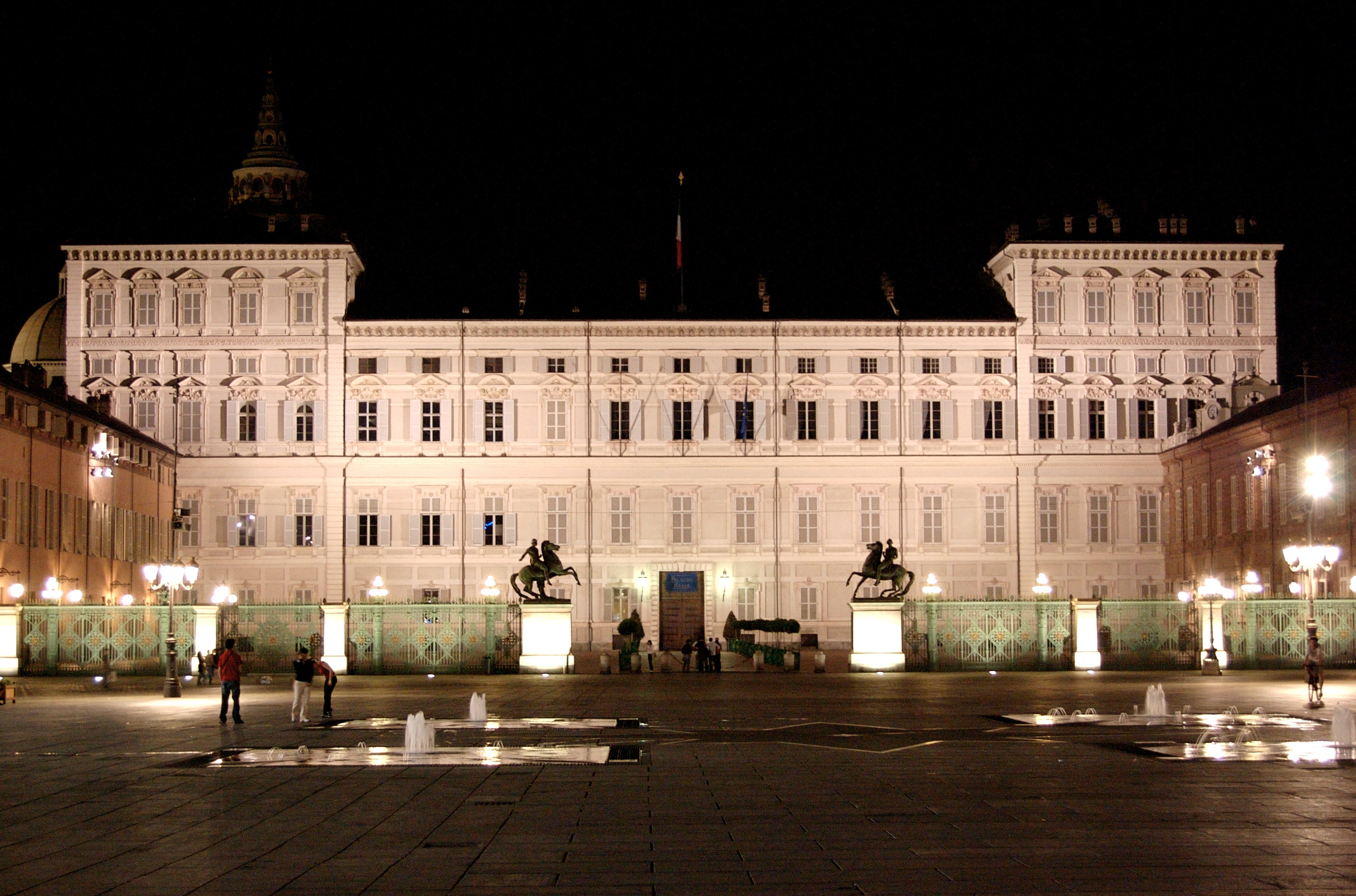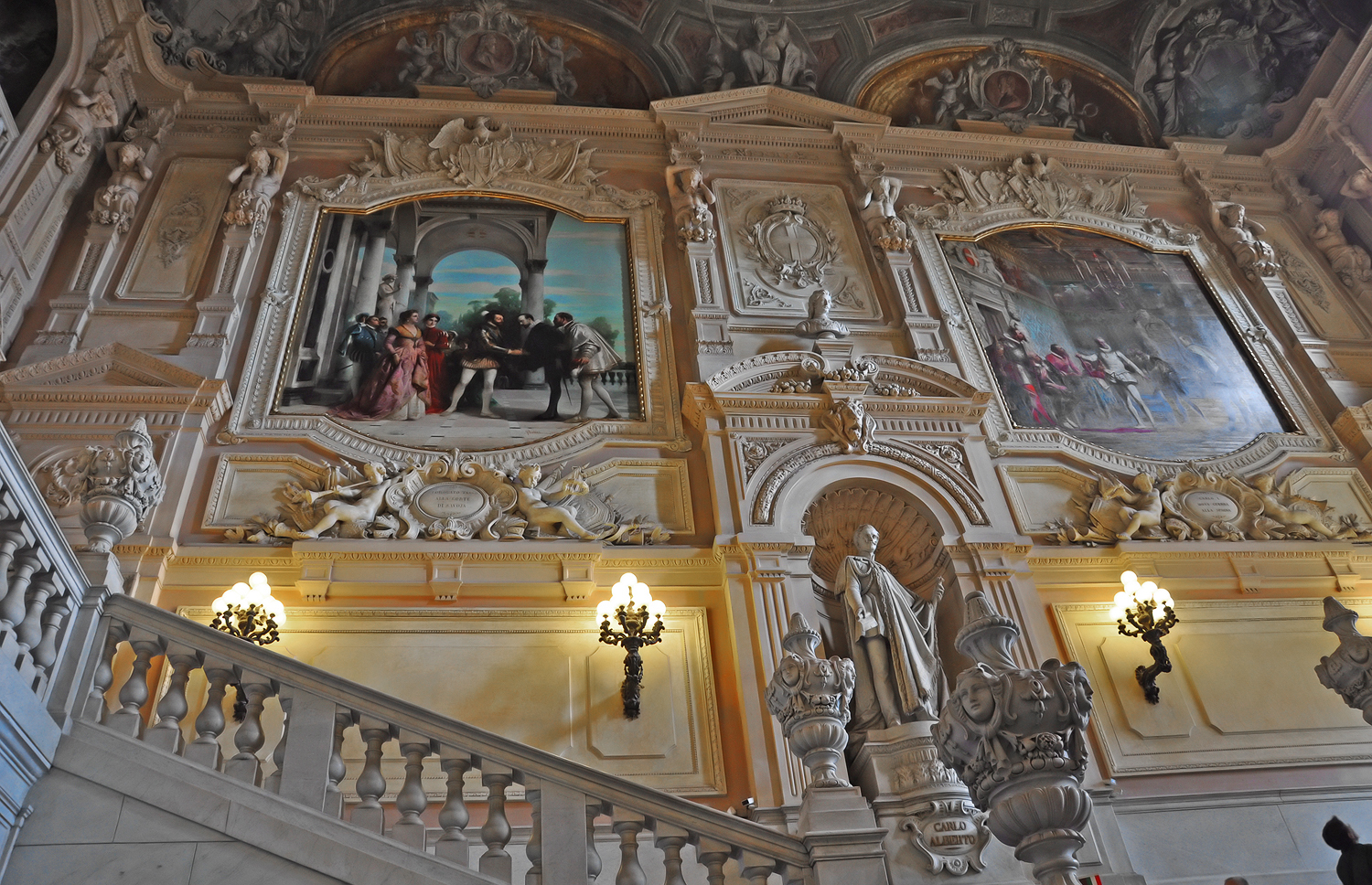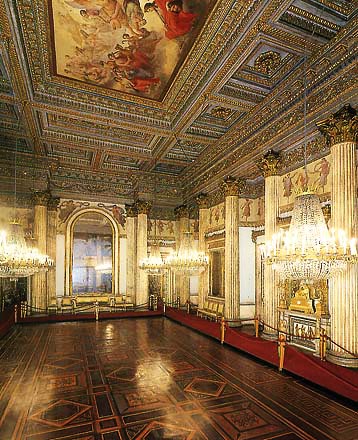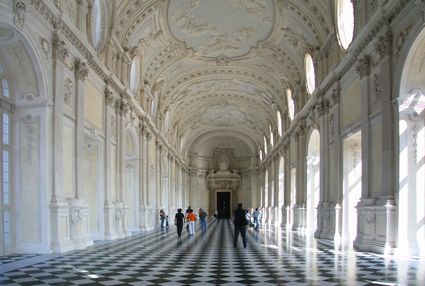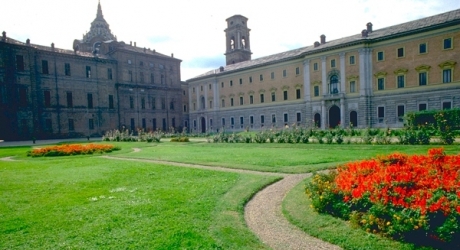
The Royal Palace
This post is also available in:
 Italiano (Italian)
Italiano (Italian)
Palazzo Reale was the official residence of the Savoy Family until 1865, subsequently enlarged and renovated.
Through the grand staircase from the atrium, visitors can reach the main floor where the official reception rooms are decorated with carved ceilings, stucco, gilding and frescoes.
In the large “Salone degli Svizzeri” (“Hall of the Swiss”), decorated by the painter brothers Antonio and Gian Francesco Fea (1558-1661), there’s the entrance to the “Gallery of the Holy Shroud”; the latter leads straight to the chapel, the “Galleria delle Battaglie” (“Gallery of the Battles”), the “Scala delle Forbici” (“Scissors Staircase”) and several other representation rooms.
The first one is the hall of the cuirassiers or “Dignity room”, with two tapestries with the main natural elements by Beauvais manufacture (ca. 1695). Then, there is the “Sala degli Staffieri” (“Manservant Hall”) or “Sala delle Virtù” (“Hall of the Virtues”) featuring the tapestries of Don Quixote on the walls. Visitors can eventually reach “Sala dei Paggi” (Hall of the Page Boys”) or “Sala delle Vittorie” (“Hall of Victories”), with paintings and decorations of the XVII century.
The throne room houses gilded carvings from different eras and a beautiful inlaid floor.
The Audience Hall and that of the Council retain the XVII century ceilings, while the furnishings and decorations are due to the works of Pelagio Pelagi.
The Chinese Cabinet is covered with original lacquers designed by Filippo Juvarra, with a fresco by Claudio Francesco from Beaumont. After passing Carlo Alberto’s bedroom, visitors can access the Breakfast room, with a XVII century ceiling and a fireplace fender carved by Giuseppe Maria Bonzanigo; from this very room, an octagonal alcove can be then reached.
The Daniel Gallery takes its name from Daniel Seyter, who painted the Apotheosis of Vittorio Amedeo on its vault.
The rooms of the Queen’s apartment are also part of the tour: the bedroom, with the Seyter ceiling, the workroom, the dressing room, the “pregadio” (“kneeling-stool”), the chambermaid room, the machine room and the Queen’s private chapel, decorated with drawings by Benedetto Alfieri.
The Cabinet of miniatures, named after the collection of several Savoy character figurines, leads to the Dining Room, with tapestries from Turin factory, and to the “Sala del Caffè” (“Coffee Hall”). The Alcove Room, on the other hand, preserves the XVII century gilded carvings and a part of Carlo Alberto’s collection of Japanese and Chinese vases.
Eventually, there’s the Queen’s throne room, with marble ovals and the “Triumph of Grace” in a vault, and the Ballroom, with white marble columns. On the second floor, there are other apartments of the Dukes of Savoy and the Dukes of Aosta, with decorations and furnishings from the XVIII-XIX centuries (visible only on special occasions).
In the basement of the building, there are the kitchens and the gigantic “cantinoni” (“big cellars”).
The porticoed courtyard leads to the garden enclosed by the XVII century fortifications, which retains signs of the original project by André Le Notre who included water basins and avenues arranged in a radial pattern.
This post is also available in:
 Italiano (Italian)
Italiano (Italian)
Contatti
Piazzetta Reale 1 - 10122 Torino(TO)
011 4361455
sbap.pie-reale@beniculturali.it
http://www.piemonte.beniculturali.it
Altre info
Da martedì a sabato ore 8.30-19.30; ultimo ingresso alle ore 18.00. Domenica ore 8.30-19.30; ultimo ingresso alle ore: 18.00. Chiuso tutti i lunedì ed il 1 gennaio, 1 maggio e 25 dicembre.
